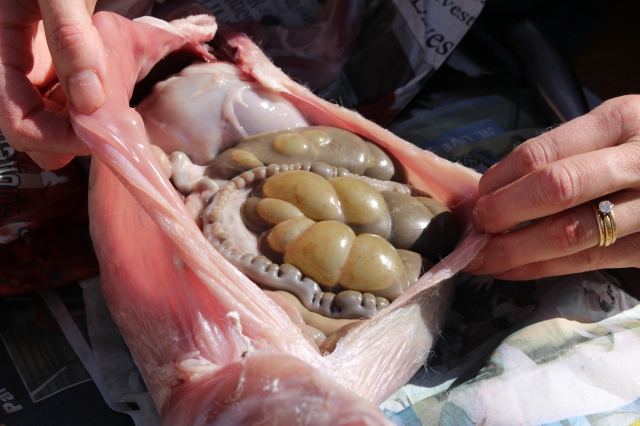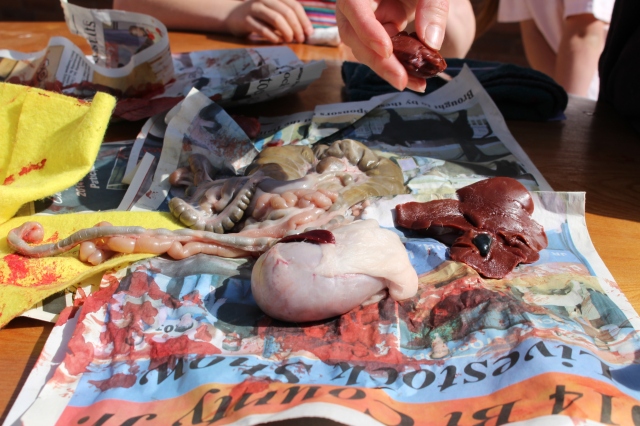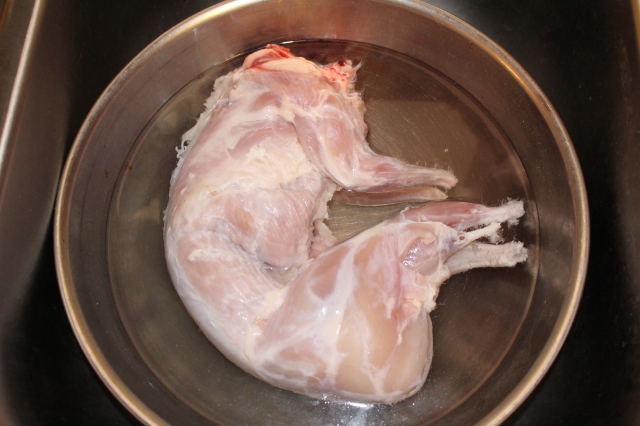The kids and I just killed and butchered my oldest daughter’s show rabbit. Beforehand, we thanked God for the life of the rabbit and the food and fiber it was about to provide… the very reason for its existence.
Carcass cleaned and in the kitchen, I thought I’d check out some recipes on the Internet. I came across several awesome-looking recipes, but the owner of the rabbit (oldest daughter!) got to choose. Rabbit stew. I drilled down and found the blog site of Holly Larson, Registered Dietician.
Upon reading her misinformation about my own industry, I felt compelled to respond.
Thank you for the recipe! My kids (13, 11, 9 and 7) and I just butchered a rabbit and I am checking out recipes on the Net. We plan to tan the hide and hope to make a nice warm hat out of the pelt. Teaching kids (and adults!) about where food and fiber really comes from is important.
I grew up on a cattle ranch in Oklahoma and now live in Texas. Growing up, my family butchered our own cattle for meat, and we kids loved to watch and help with the entire process. People being disconnected from food production is a shame, and I love teaching my children how to respect life and understand that life has purpose. In most cases, that purpose is brought to fruition through a respectful and painless death.
My husband’s and my livelihood is the cattle feeding industry, and I just wanted to clarify a couple of points. You say, “The rabbit manure stays on the farm and increases soil fertility vs. cow manure being treated as a hazard and being carted off and polluting our waterways.”
Cattle manure from feedyards is not treated as a hazard! In fact, there is an entire composting industry that has built up around feedyards, and the manure (not waste!) is windrowed and composted by custom composters, and sold to local farms and/or into the urban/suburban garden/lawn soil market. So all those nutrients go back into the soil. Very awesome. We do not pollute our waterways at all.
Also, you say, “The majority of animals raised for meat in the US are done so without respect for the animals and without care for the environment.”
This, too, is patently false. Our animals are well cared for. Were this not the case, productivity would not have increased. If we do not feel well, we do not thrive. Animals are the same. The better we care for our animals, the better they do and the more money we make.
As for care for the environment, we now produce more beef using fewer resources than at any time in history! What could possibly be better for the environment!? Feedyard operators are not evil, uncaring people. In fact, they are family men like my husband and real women like me who care about our communities, our animals, our land and our future. “Sustainability” only exists through efficiency and improvements and making money over time.
Contrary to what popular culture seems to be telling us, profitability and care for animals and the environment are NOT mutually exclusive, but directly proportional.
Thanks again for the awesome-looking recipe! Can’t wait to try it (yes, the kids and I have decided upon this one!).
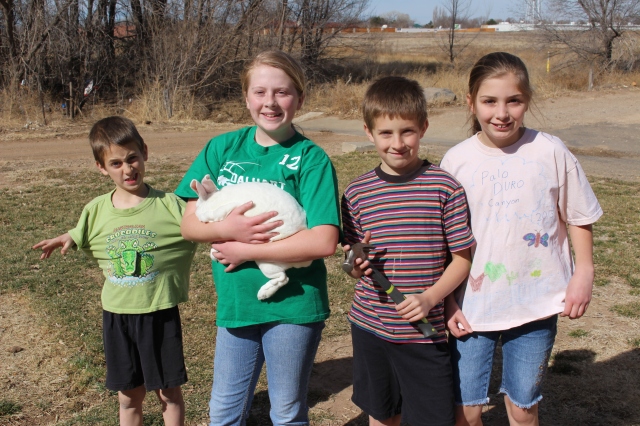
The young producers/students. (Note: youngest is not mentally impaired, although he continually works at making people believe he is!)
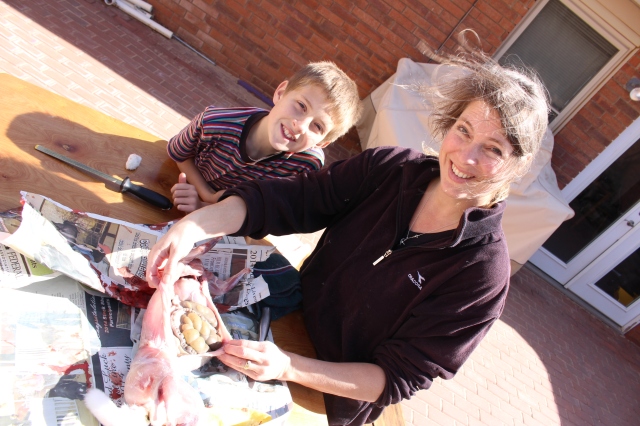
I was one of 5 children. Our favorite part of butchering a steer when I was a kid was when we could see the guts! My children were just as enthralled. (Rabbit’s just smaller scale!)
♠♠♠♠
I love ag… ALL ag!… farming with factory-like efficiency, small-scale gardening, rabbit production, back-yard chicken/egg production! I do not understand why producers feel the need to attack others. Let us all produce what markets demand and let us all consume what we wish. I can only explain attacks on “industrialized” ag this way: We have been so successful at production that people now have the luxury to attack us.
